Helping Barn Owls Help Farmers
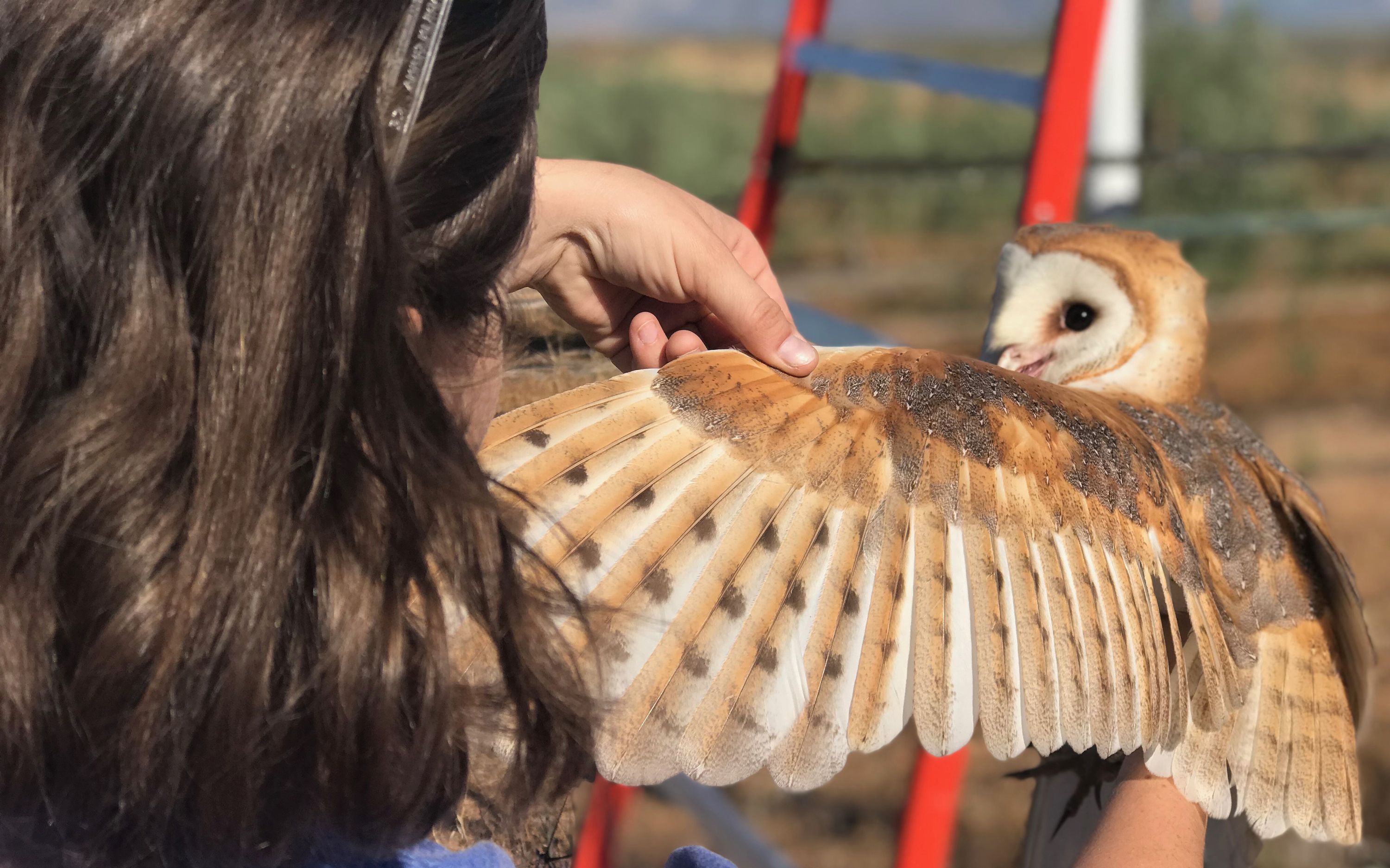
Barn owls are big, beautiful biocontrol.
“Barn owls are rodent-killing machines,” said Sara Kross, an assistant professor in environmental studies at Sacramento State University. “They are natural predators of gophers and voles which can be really horrible pests for agriculture.”
But as good as the owls can be at controlling rodents on farms, growers may still need rodenticides to control the population explosions that can happen with any small rodent species. And because rodenticides don’t kill immediately, barn owls can eat exposed voles, mice and rats and get exposed themselves, which may limit their ability to hunt and control pests.
It’s an example of one pest-control method affecting another, and something Kross and a team of students from the University of California, Davis and Sacramento State are studying at five different California farms. They’re looking specifically at the frequency barn owls are being exposed to rodenticides and whether or not that affects the pest-control services that farmers get from the owls as a result.
“We’re looking to figure out ways farmers can utilize all the tools in their IPM tool chests,” Kross said. “Rodenticides are tools that are sometimes necessary, and barn owls can be really effective tools as well. We want to figure out a way they can be used harmoniously without impacting the barn owls negatively.”
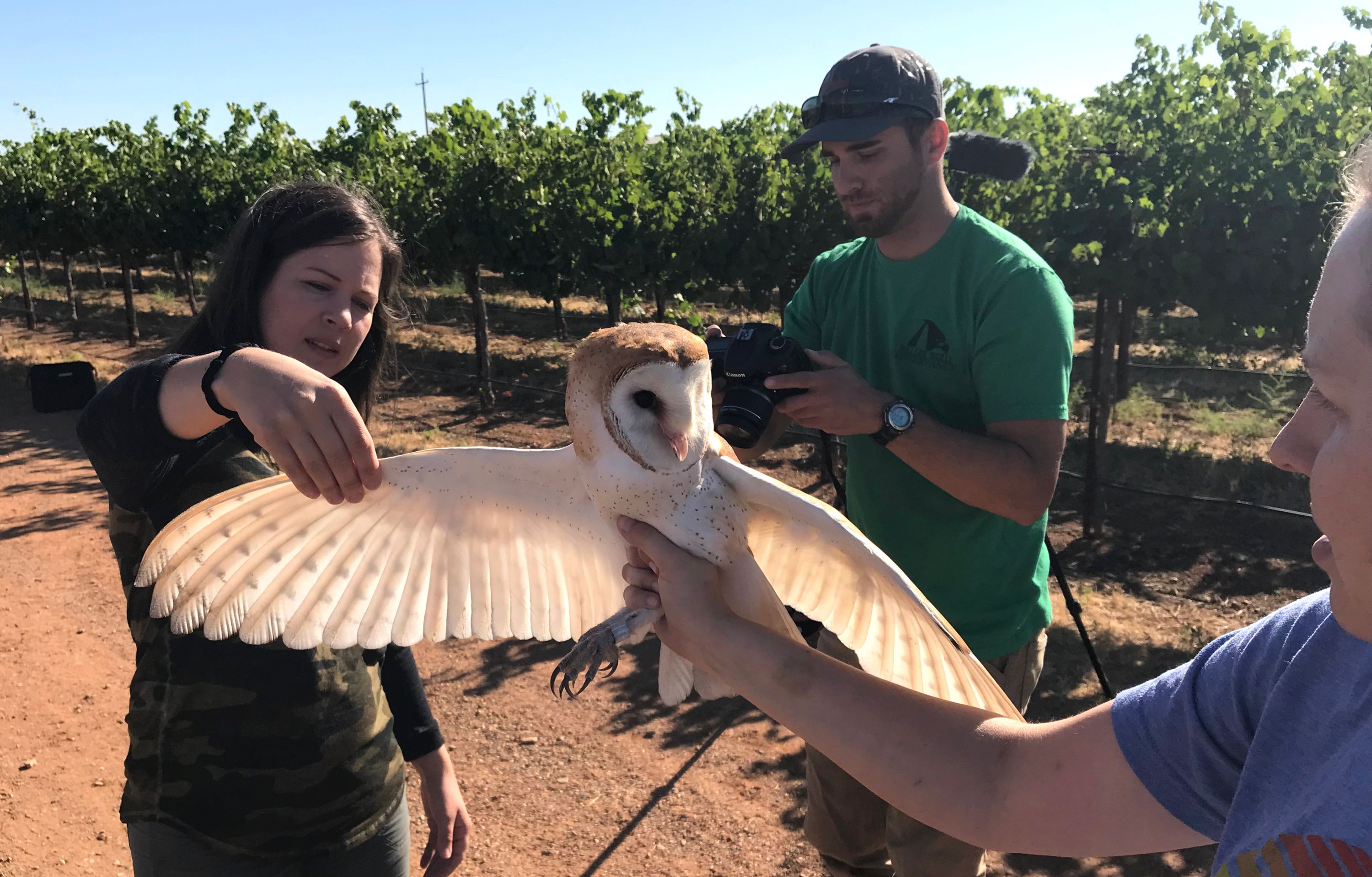
UC Davis students Breanna Martinico, Ryan Bourbour and Emily Phillips photograph a barn owl
Barn Owl Backpacks
There are several elements of Kross’s study, which is being funded by a grant from the Western Sustainable Agricultural Research and Education program.
The first is to look at the frequency and level owls on the farms are being exposed to rodenticides, through analysis of their pellets, droppings and blood. Then they’ll look for the effects of that rodenticide exposure on the owls.
“Very little is known about the sublethal effects of rodenticides on barn owls,” Kross explained. “Lethal exposure levels obviously kills the owls and removes them from the landscape, but the sublethal effects can be varied. We’re looking to see if we find things like lethargic behavior or if they’re more likely to have infections or parasites on them. Really importantly, we’re looking to see if it affects the growth rate of the chicks, because if an owlet doesn’t grow fast enough, it may not be healthy enough to survive when it leaves the nest.”
Kross’s team checks owl boxes daily, recording where leg-banded adults are found, and weighing and measuring chicks to correlate rodenticide levels with growth rate. At Matchbook Wine Company’s vineyards in the Dunnigan Hills north of Sacrament one June Thursday, the team found a breeding pair of adults in one box, and sets of four and five chicks in two other boxes. Matchbook’s Greg Giguiere got to hold one of those chicks while the students weighed its siblings.
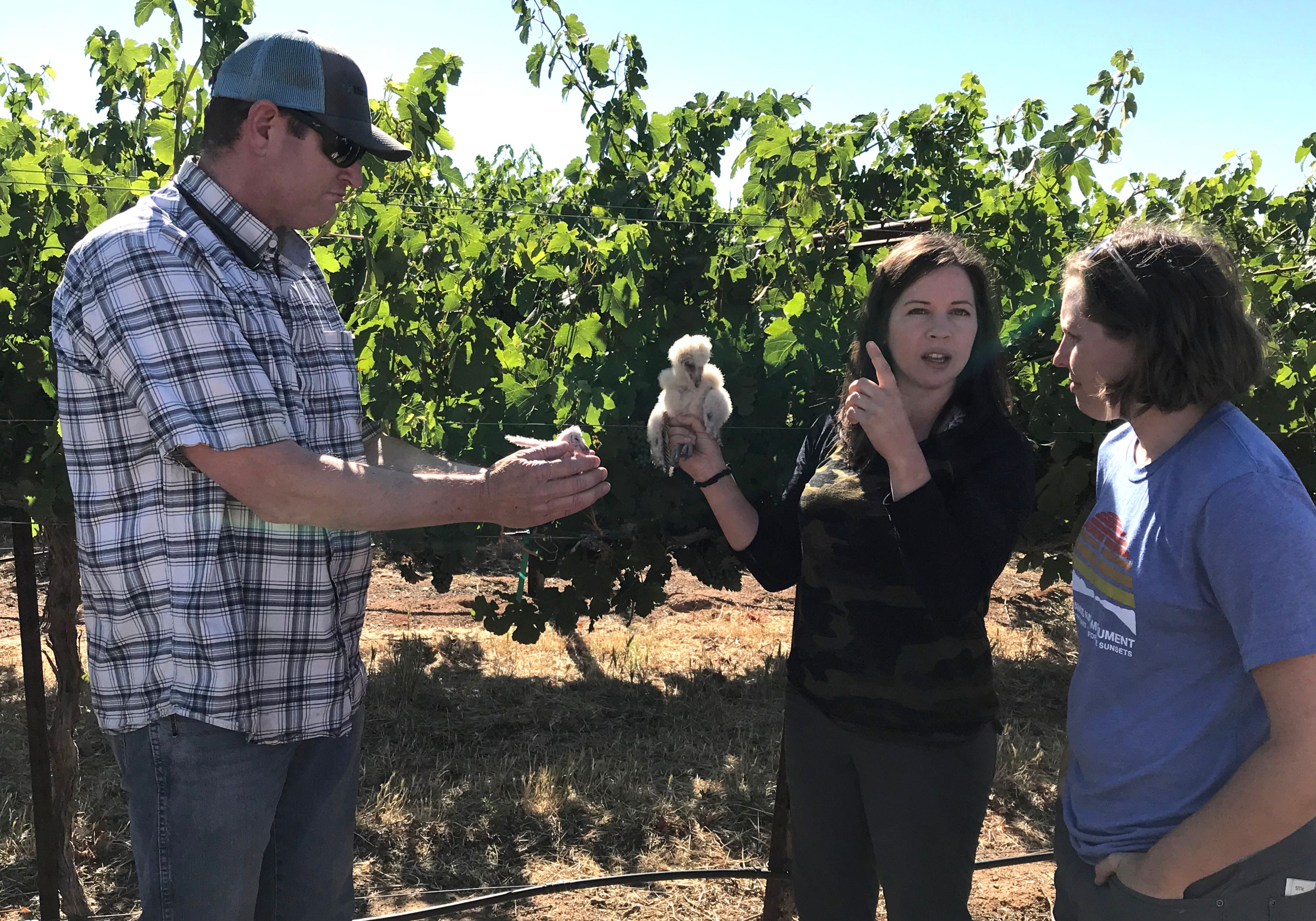
Matchbox Wine's Greg Giguiere holds an owl chick
“My family’s been growing wine grapes here since the 1970s, and controlling rodents is a big part of our integrated pest management program,” he said. “We have 40 owl boxes on the farm. The rodent control is what we’re after, and it’s part of having an integrated system of biodiversity and biological controls to complement the chemical options we have for controlling these types of things.”
The survival rate of the owl chicks is one of the big questions being looked at in the three-year study. How many make it to adulthood, and do they stay in the area? Does rodenticide exposure impact that, and at what levels?
Another aspect of the project is tracking where the owls hunt. For that, adults will be fitted with little GPS backpacks that will record their movements for up to two weeks at a time before the backpacks are transferred to a different bird to record more data.
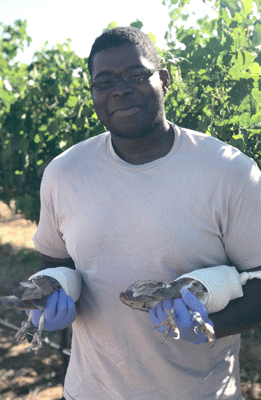
Sac State student Adeyemi Walker-Thomas and owls
“We’re really fortunate to be working with barn owls because they come back to same place and sleep in these boxes during the day so we can recapture them,” Kross said.
By knowing where the owls hunt, Kross hopes to be able to help farmers map where they’re getting good rodent control from the birds and where they may not be. It’ll also help pinpoint where and when the owls may be in most danger for rodenticide exposure. While efficient predators all year, the owls are especially active when they have hungry chicks to feed.
“Right now, every box that’s being occupied has between three and seven chicks and those chick are being fed multiple rodents every day,” Kross said. “Sometimes we come across boxes where adults have stashed a half-dozen gophers to be able to feed to the chicks later.”
Ultimately, the study data may help growers place barn owl boxes in the locations that will do them the most good, and place rodenticide bait stations in the periods and places that cause the owls the least harm.
And that is very attractive to Gigurere.
“A big part of farming is being connected to the land,” he said. “So a lot of what we do goes to that. I’ve very interested in reducing chemical inputs into our system and moving away from a monoculture and having more biodiversity. So it’s a very exciting program and we’re definitely on board and moving forward, and want to do even more habitats for hawks and other predators.”
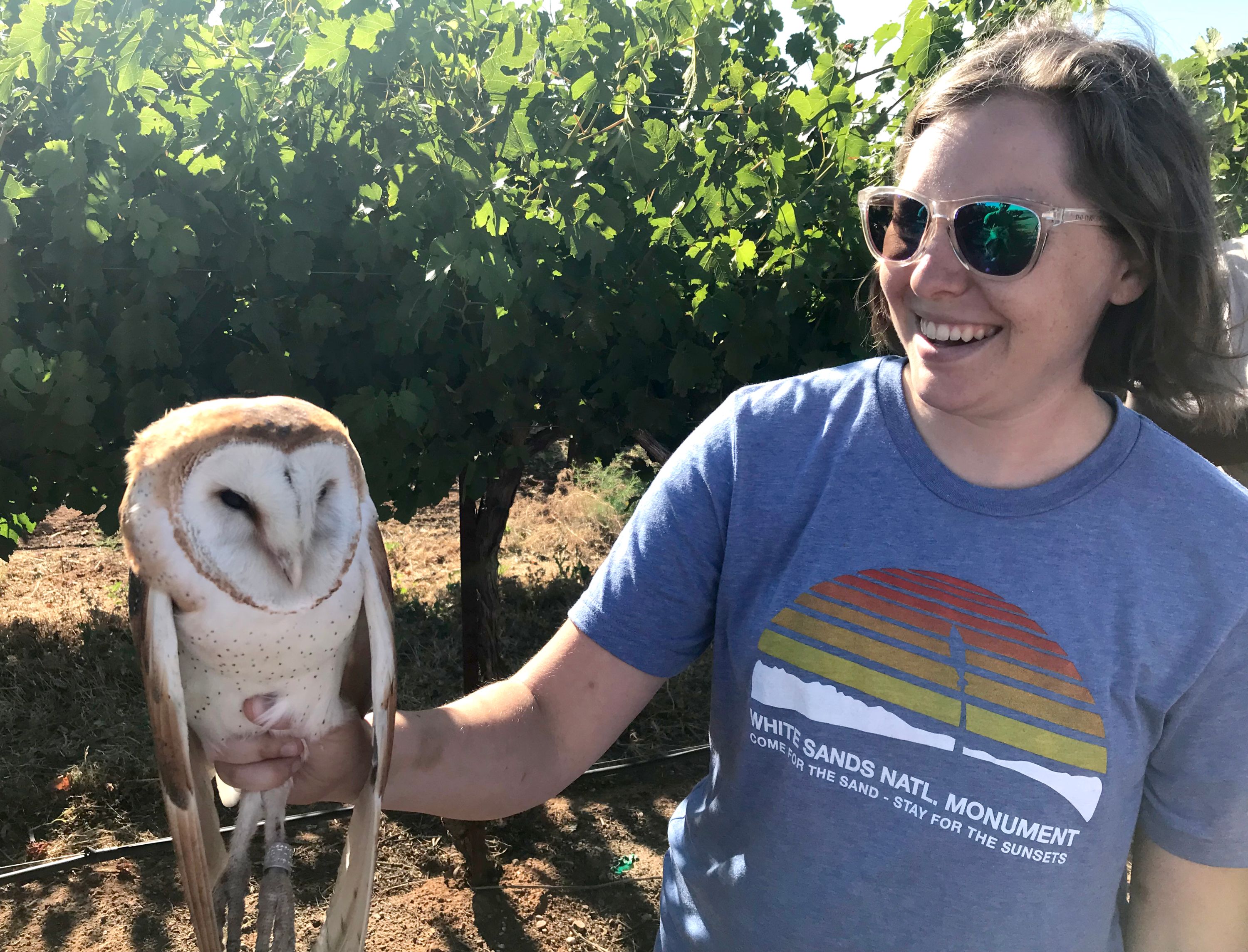
UC Davis's Emily Phillips and a sleepy male